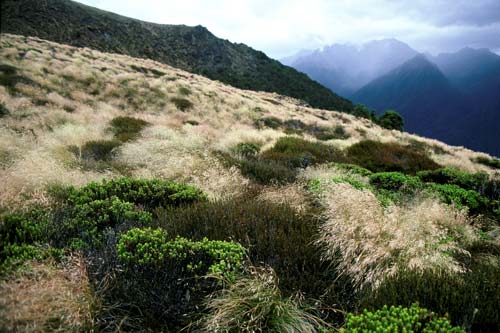
In Fiordland at around 1,000 metres, beech forest reaches its upper altitude limit (known as the bush line). Here on the slopes of Mt Luxmore snow tussocks, Dracophyllum and hebe are dominant just above the bush line. Most alpine plants have evolved over the past 5 million years as mountains arose in New Zealand. Lowland species, such as hebe, have successfully adapted to alpine conditions, evolving into new species suited to new habitats. This process is widespread among New Zealand plants and animals and is referred to as adaptive radiation.
Using this item
Department of Conservation
Reference:
10060770
This item has been provided for private study purposes (such as school projects, family and local history research) and any published reproduction (print or electronic) may infringe copyright law. It is the responsibility of the user of any material to obtain clearance from the copyright holder.







Add new comment